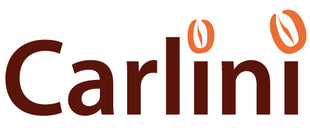☕ What’s the Difference & Why It Matters
Single-serve coffee systems—pods and capsules—have revolutionized home brewing. But despite their convenience, many coffee lovers still confuse the two. Understanding the difference between coffee pods and capsules is essential to avoid costly mistakes and ensure the best brewing experience.
🔍 Are Coffee Pods and Capsules the Same?
Not quite. While both serve the same purpose—delivering a precise dose of coffee for quick brewing—they differ in design, compatibility, and performance. Each system has its own specifications, and pods and capsules are not interchangeable across machines.
If you're using a pod or capsule coffee machine, it's crucial to know exactly which type suits your device. Using the wrong consumables can lead to frustration, wasted money, and poor coffee quality.
📦 Understanding Pod & Capsule Compatibility
After 17+ years of manufacturing and selling portion-control coffee products, we’ve seen one common issue: confusion around terminology. Retailers often label machines generically as “pod” or “capsule” systems, without specifying the exact format required.
This leads consumers to assume all pods or capsules are compatible—which they’re not. It’s like buying car parts without knowing the model: too vague to be useful.
To avoid this, always check your machine’s specifications and look for brand-specific compatibility. Some systems are open-standard, while others are proprietary and restrict third-party options.
🏷️ Popular Pod & Capsule Systems Explained
✅ Nespresso Original (Classic)
The most widely used system in Australia, Nespresso Original machines support a vibrant market of compatible capsules from various coffee brands. This open format allows for choice in flavor, quality, and price.
However, Nespresso Vertuo is a proprietary system. Its capsules are not compatible with Original machines and must be purchased directly from Nespresso, limiting consumer choice.
✅ ESE Pods (Easy Serving Espresso)
Popular in Europe, ESE pods offer a higher coffee dosage and lower environmental impact. Unfortunately, support for ESE in Australia has declined due to limited backing from brands like Sunbeam, Breville, and DeLonghi.
✅ Dolce Gusto
Dolce Gusto systems allow for multi-ingredient capsules, combining coffee with milk powders or flavorings like caramel and hazelnut. While convenient, the taste often falls short of fresh espresso. This system is popular in Asia, where fresh milk may be less accessible.
✅ Other Proprietary Systems
Brands like Aldi, Illy, and Lavazza offer proprietary machines that require specific pods or capsules. Some, like Illy and Lavazza, also produce Nespresso-compatible capsules to reach a broader market.
⚙️ The Rise of Automatic Espresso Machines
For those seeking café-quality coffee at home without the mess or skill of manual brewing, automatic espresso machines are a compelling upgrade. Brands like Jura, Breville, DeLonghi, and Sunbeam offer machines that dose, grind, tamp, extract, and froth milk—all in one.
However, these machines come with trade-offs:
-
Higher cost & maintenance
-
Plastic components prone to wear
-
Regular cleaning required, especially milk lines
-
Lower brew quality compared to manual systems
Still, for many, the convenience outweighs the compromises. Automatic machines suit users who value simplicity and speed over barista-level control.
🧭 Choosing the Right Coffee System for You
Coffee is a journey. Most people start with instant coffee, move to pods and capsules, then explore automatic machines, and eventually graduate to manual espresso setups.
If you're ready to upgrade from basic pods or capsules, consider:
-
Your budget
-
Desired coffee quality
-
Time and effort you're willing to invest
-
Machine compatibility and consumable availability
📌 Final Thoughts
Understanding the differences between coffee pods and capsules, and the systems they support, is key to enjoying better coffee at home. Whether you're sticking with Nespresso Original, exploring ESE pods, or investing in an automatic espresso machine, make sure your choices align with your taste preferences and lifestyle.
Want help choosing the right system or finding compatible capsules? Explore our or browse our for award-winning blends.

